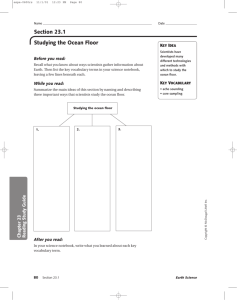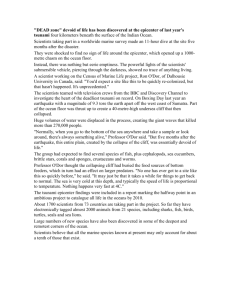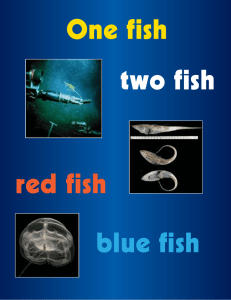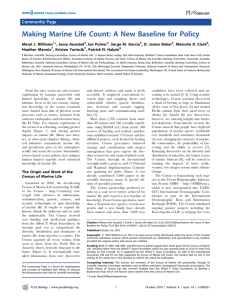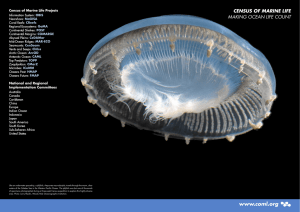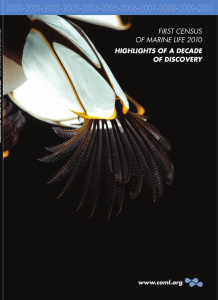Oceans could contain 750000 undiscovered species The
advertisement
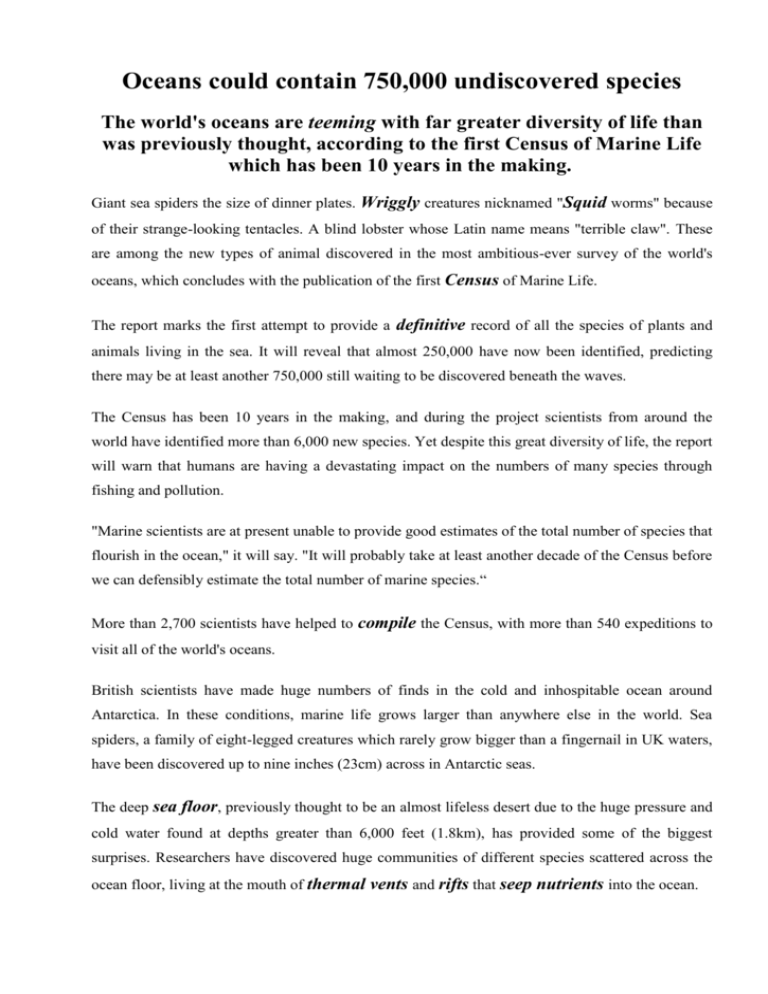
Oceans could contain 750,000 undiscovered species The world's oceans are teeming with far greater diversity of life than was previously thought, according to the first Census of Marine Life which has been 10 years in the making. Giant sea spiders the size of dinner plates. Wriggly creatures nicknamed "Squid worms" because of their strange-looking tentacles. A blind lobster whose Latin name means "terrible claw". These are among the new types of animal discovered in the most ambitious-ever survey of the world's oceans, which concludes with the publication of the first Census of Marine Life. The report marks the first attempt to provide a definitive record of all the species of plants and animals living in the sea. It will reveal that almost 250,000 have now been identified, predicting there may be at least another 750,000 still waiting to be discovered beneath the waves. The Census has been 10 years in the making, and during the project scientists from around the world have identified more than 6,000 new species. Yet despite this great diversity of life, the report will warn that humans are having a devastating impact on the numbers of many species through fishing and pollution. "Marine scientists are at present unable to provide good estimates of the total number of species that flourish in the ocean," it will say. "It will probably take at least another decade of the Census before we can defensibly estimate the total number of marine species.“ More than 2,700 scientists have helped to compile the Census, with more than 540 expeditions to visit all of the world's oceans. British scientists have made huge numbers of finds in the cold and inhospitable ocean around Antarctica. In these conditions, marine life grows larger than anywhere else in the world. Sea spiders, a family of eight-legged creatures which rarely grow bigger than a fingernail in UK waters, have been discovered up to nine inches (23cm) across in Antarctic seas. The deep sea floor, previously thought to be an almost lifeless desert due to the huge pressure and cold water found at depths greater than 6,000 feet (1.8km), has provided some of the biggest surprises. Researchers have discovered huge communities of different species scattered across the ocean floor, living at the mouth of thermal vents and rifts that seep nutrients into the ocean. The "Squidworm", a new species of worm, was found living in the deep water of the Celebes Sea in south east Asia. A furry crab, named the Yeti Crab or Kiwa hirsuta, was also among the discoveries when it was found beside a vent in the deep sea off Easter Island in the south Pacific. Not only was it a new species but part of a new family previously unknown to science. Dr Maria Baker, a researcher at the National Oceanography Centre in Southampton and a project manager on the Census, said: "Life is much more widespread on the ocean floor than was thought. The Census provides us with a baseline to measure the effects that humans are having, but it also shows us that we still have no idea of exactly what we are sharing our planet with." Genetic testing now allows scientists to work out whether newly-discovered creatures are new species or just differently-coloured or shaped variants of those already known. Dr Huw Griffiths, a marine scientist at the British Antarctic Survey who has gone on some of the Census expeditions, said: "About 80 per cent of the species in the Antarctic live on the sea floor. It is incredibly rich and varied there. They are the sort of creatures that a palaeontologist might be more likely to recognize than a marine biologist because they seem to be communities we normally see in the fossil record than in modern oceans elsewhere." By Richard Gray. Daily Telegraph. Published: 10:00AM BST 03 Oct 2010 Vocabulary teeming - переполненный, битком набитый wriggly ['rɪglɪ] - извивающийся squid [skwɪd] – кальмар census ['sen(t)səs] - перепись; сбор сведений definitive [dɪ'fɪnɪtɪv] - наиболее полный; авторитетный compile - собирать (материал) sea floor - морское дно thermal vents - выходы термальных вод rifts – разломы to seep - просачиваться, проникать, протекать nutrient ['njuːtrɪənt] - питательное вещество baseline - исходные данные, отправная точка variant ['vɛərɪənt] - вид, тип fossil - ископаемое, окаменелость Comprehension Questions 1) What is a census of marine life? Describe it in your own words. 2) How many species do scientists expect to discover? 3) How long did it take to compile the Census of marine life? 4) What impact does the mankind have on sea animals? Do you consider it negative or positive? Why? 5) Are scientists at present able to provide good estimates of the total number of species that flourish in the ocean? 6) In what seas were the most number of new species discovered? 7) Which part of the sea in the North is more inhabited? Did scientists predict it would be so rich in life? 8) Were the communities of living organisms scattered everywhere, or in some exact places on the ocean floor? Name the usual places. 9) Why, according to Dr Maria Baker, a researcher at the National Oceanography Centre in Southampton, is the Census useful for scientists? 10) What method helps scientists identify the newly-discovered species as new or as just variants of those already known?



